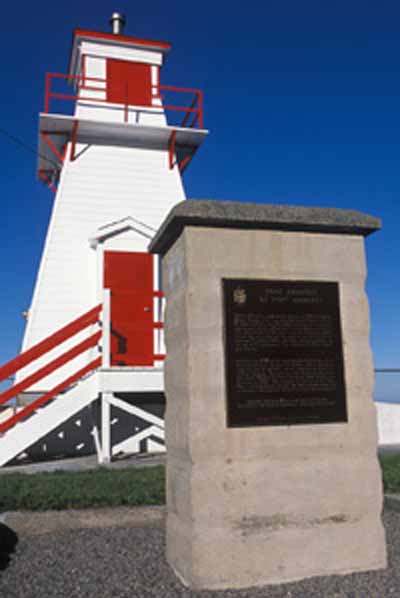Fort Amherst National Historic Site of Canada
St. John's, Newfoundland and Labrador

General view
(© Parks Canada Agency / Agence Parcs Canada, I.K. MacNeil, 1984.)
Address :
Southside Road, St. John's, Newfoundland and Labrador
Recognition Statute:
Historic Sites and Monuments Act (R.S.C., 1985, c. H-4)
Designation Date:
1951-05-30
Dates:
-
1777 to 1777
(Construction)
Event, Person, Organization:
-
Admiral John Montague, Governor of Newfoundland
(Person)
-
Royal Engineers
(Organization)
-
Captain Robert Pringle
(Architect)
Other Name(s):
-
Fort Amherst
(Designation Name)
Research Report Number:
1962-027, 2009-CED-SDC-011
Plaque(s)
Existing plaque: on the headland of the south side of the entrance to St. John's Harbour Southside Road, St. John's, Newfoundland and Labrador
The fortification completed on this site in 1777 by Captain Robert Pringle, R. E. was designed to guard the mouth of St. John's harbour, and originally consisted of a tower and gun battery. It was named after Colonel William Amherst, who had recaptured St. John's from the French in 1762. During the two world wars the site was used by Newfoundland and Canadian Forces, who built new gun positions on the tip of the promontory. Few traces of the 18th century post remain.
Approved Inscription: Newfoundland and Labrador
Originally the South Point Battery, the fortification was restored after Colonel W. Amherst's recapture of St.
John's from the French in 1762. Reconstructed by Colonel Pringle, R.E., under Governor Lord Shuldham in 1772, it was used by Newfoundland forces in World War I and Canadian in World War II.
Description of Historic Place
Located on a hilly promontory overlooking the Atlantic Ocean, Fort Amherst National Historic Site of Canada, of which there are no visible remains, sits at South Head, the entrance to the Narrows of St. John’s Harbour in Newfoundland. Now marked by a Historic Sites and Monuments Board of Canada plaque, the fort was strategically located to provide for the defence of St. John’s. Fort Amherst is situated within the boundaries of Signal Hill National Historic Site of Canada. Official recognition refers to a five-metre radius surrounding the Historic Sites and Monuments Board of Canada cairn and plaque.
Heritage Value
Fort Amherst was designated a national historic site of Canada in 1951 because: the British fortification, completed on this site in 1777, guarded the mouth of St. John’s harbour, and was named after colonel William Amherst, who had recaptured St. John’s from the French in 1762.
The heritage value of Fort Amherst lies in its strategic location and its long history of use as a military defensive installation. In 1769, a proposal was put forth to build a battery intended to give protection to ships which were headed for the harbour but could not enter due to high winds. Named Fort Amherst, this battery was located at the South Head entrance to the Narrows. Part of an extended system of defence designed to protect British interests in Newfoundland, it was constructed between 1772 and 1777 under the supervision of Captain Robert Pringle of the British Royal Engineers. Fort Amherst consisted of a tower and a small battery below, eventually pierced for 20 guns. While the original eighteenth-century fort eventually fell into ruin, Fort Amherst’s strategic importance was evident long after the colonial wars of the eighteenth century, as evidenced by the nineteenth and twentieth-century military installations that later occupied the site.
Sources: Historic Sites and Monuments Board of Canada, Minutes, May 1951, April 2009.
Character-Defining Elements
Key elements contributing to the heritage value of this site include: its strategic location, high on a hilly promontory overlooking the Atlantic Ocean to the east and the Narrows to the north, offering a commanding view of the surrounding area; its setting within Signal Hill National Historic Site of Canada, on the south side of the Narrows, where the Historic Sites and Monuments Board of Canada plaque is located; the integrity of any surviving or as yet unidentified archaeological remains relating to the original eighteenth-century fort which may be found within the site in their original placement and extent; viewscapes to St. John’s Harbour, across the Narrows to Signal Hill, and out over the Atlantic Ocean.